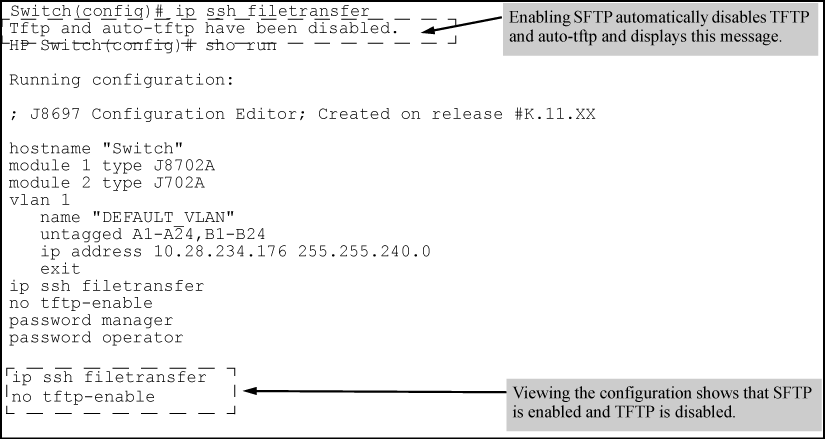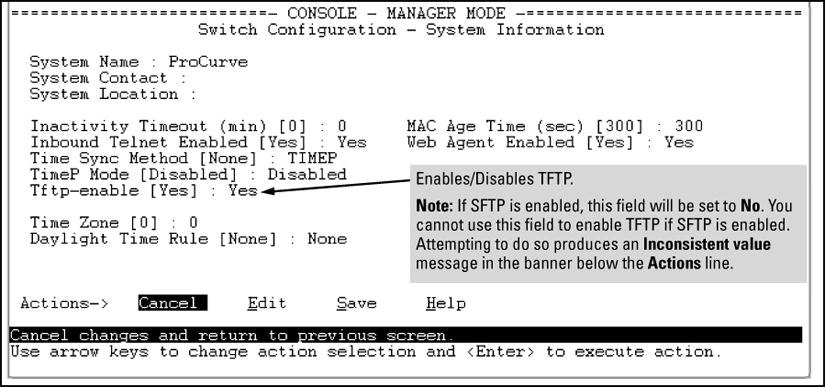Disabling TFTP and auto-TFTP for enhanced security
Disabling TFTP and auto-TFTP
Using the ip ssh filetransfer command to enable SFTP automatically disables TFTP and auto-TFTP
(if either or both are enabled), as shown in Figure 93: Example of switch configuration with SFTP enabled.

If you enable SFTP and then later disable it, TFTP and auto-TFTP remain disabled unless they are explicitly re-enabled.
Operating rules
Prerequisites
To enable SFTP by using an SNMP management application, you must first disable TFTP and, if configured, auto-TFTP on the switch. You can use either an SNMP application or the CLI to disable TFTP, but you must use the CLI to disable auto-TFTP. The following CLI commands disable TFTP and auto-TFTP on the switch.
Procedure
